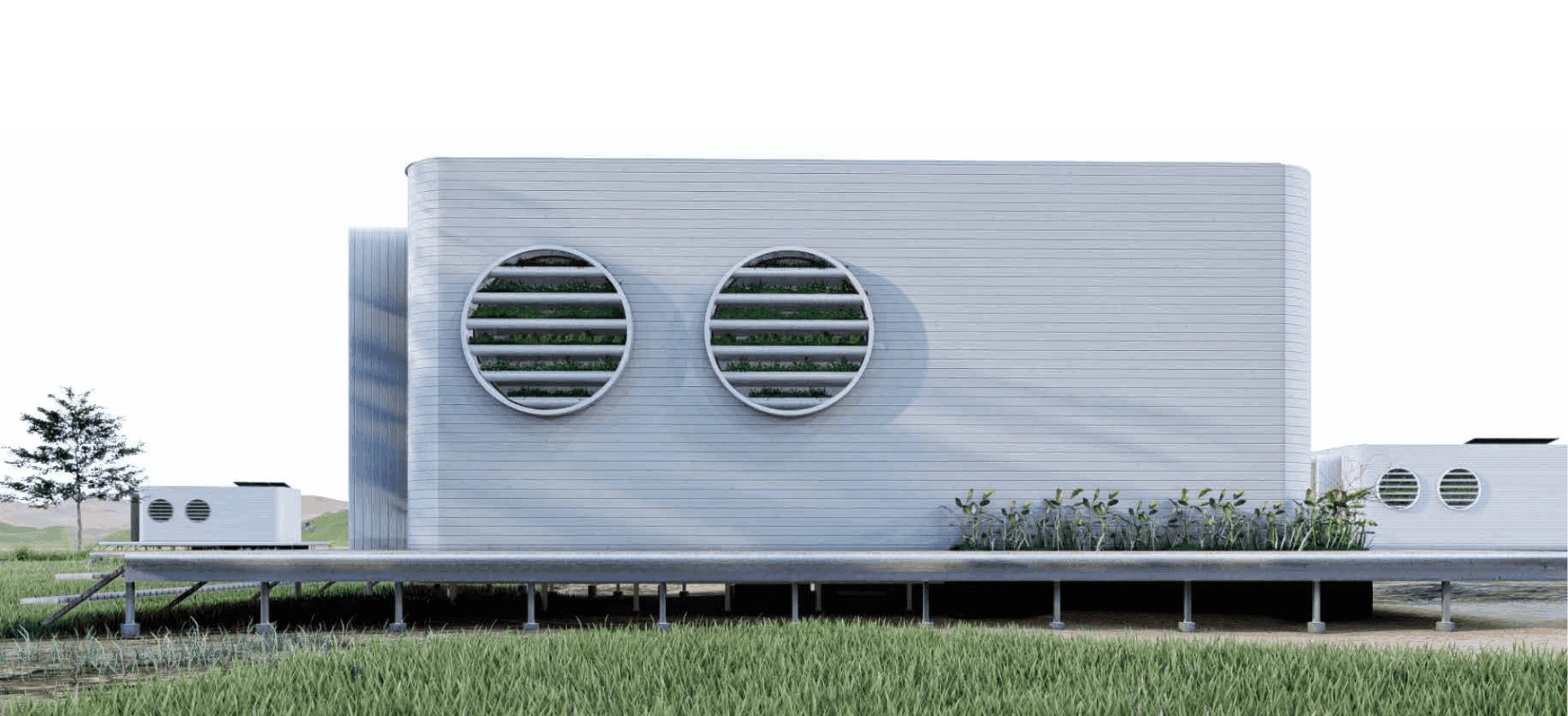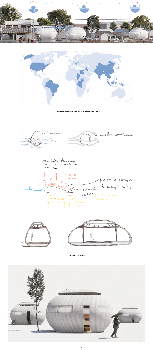

LOOP
Team: Ana Clara Cavalcante Luca Augusto Gustavo Zorzeto Ana Paula Gomes Otávio de Souza Caio Frederico e Silva Renan Balzani Through the holistic lens of nature, waste is a mercurial concept. In a cyclical dance, living things preserve the dynamic stability that colors the Earth. From plants to fungi, and back, resources are continually transformed and passed on, but never wasted. Notwithstanding, fervent as it is, urbanization has long evoked a different picture. In Brazil (and in many countries alike), this scenario is especially conspicuous, as waste disposal remains largely unregulated and inadequately handled. Accordingly, the loop reframes the avail of human overflow. Inspired by long-established natural mechanisms, it intends to shelter the most affected ones: garbage pickers. Leaflike, it mainly runs on sunlight and rainwater, while wastewater and organic residues are harnessed through methanogenesis for water heating and stove power. The slightly warped envelope is mostly based on natural and recycled materials, thus it not only enables a sustainable building but it fosters scavenging as a fruitful activity in modern society. Furthermore, along with providing adequate housing, the loop's uses are manifold; its versatile layout may assume diverse functions according to the inhabitants preferences, ranging from a repair shop to a handicraft atelier. Hence, this design proposal paves the way for a mindful landscape, in which both resources and humans are encompassed by the all-around loop of things.

a m p h i b i o u s
Through the holistic lens of nature, climate change is a constant concept. It has caused more frequent and intense floods and inundations, as well as sea-level rise. Many countries around the world cyclically suffer these consequences, considering that most of their occupancy models are incompatible with the natural water cycle. In this context, the idea of a flood-resistant microhome redefines human habitation. Inspired by long-established natural mechanisms, it aims to shelter the most affected. Its' resilient form, defined by aerodynamics, is capable of withstanding natural cycles as a whole. It primarily operates with sunlight, wind power, and rainwater, while wastewater and organic waste are harnessed through methanogenesis for water heating and stove energy. The slightly twisted envelope is primarily based on 3D printing, using recycled plastic and a combination of flax fiber with recycled carbon fiber (rCF) to form hybrid composites with advantages in terms of mechanical properties, providing buoyancy and vibration damping. Therefore, it not only allows sustainable construction but also promotes recycling as a fruitful activity in modern society.